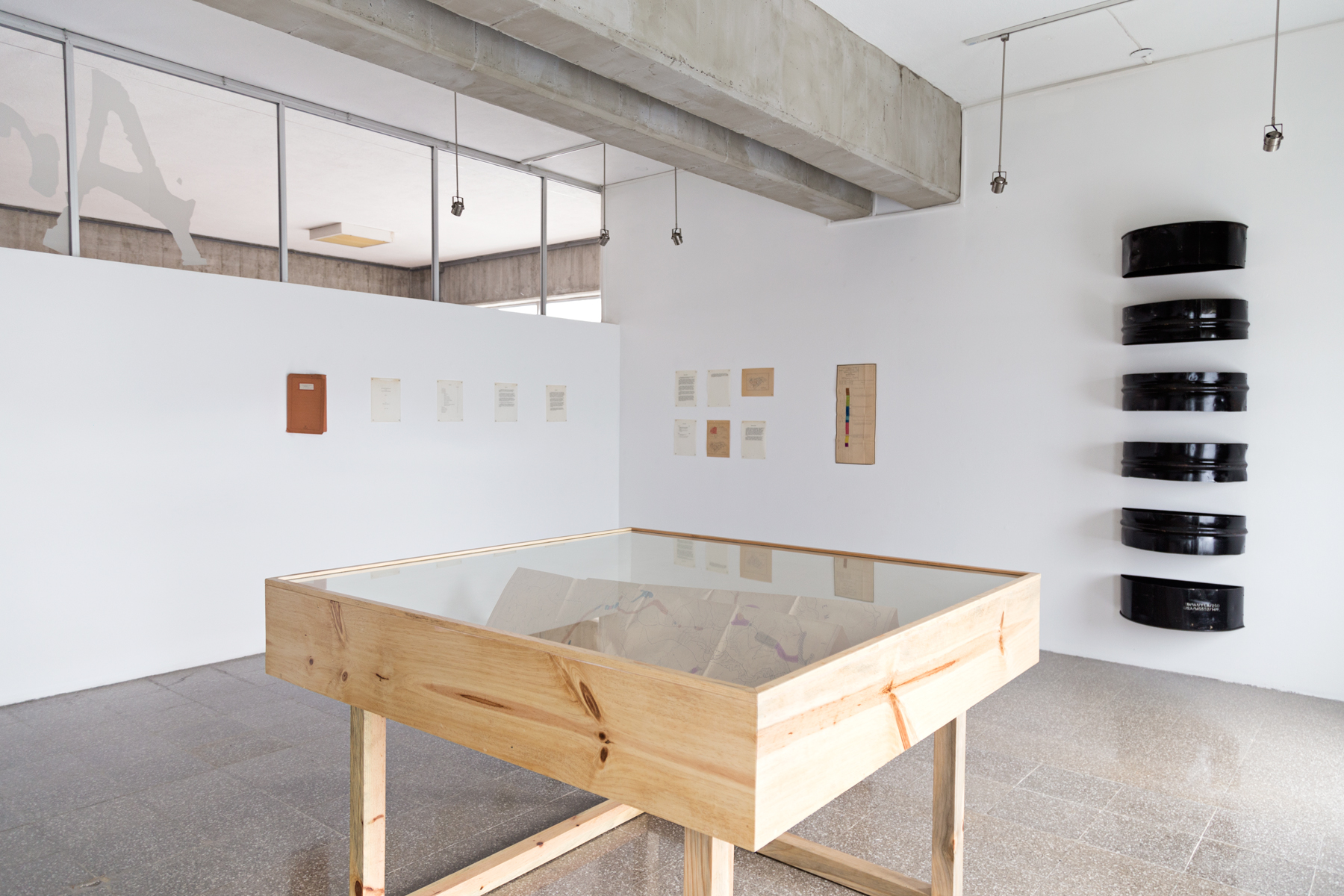






MATERIA CRUDA
Artes Visuales, Universidad Rafael Landívar.
Ciudad de Guatemala. 23 agosto - 26 octubre 2016.
Esvin recupera objetos rústicos identificados, en ocasiones con lo cotidiano urbano: fragmentos de transporte público, trozos de metal, accesorios de uso industrial, papeles o múltiples objetos de desecho, para transformarlos en objetos de arte con un cierto referente, por una lado al estilo pictóricoHard edge de los años sesenta, tanto por el color, como por la liberación de la tela en favor de la madera o la lámina, junto a la geometrización minimalista de sus arte-objetos y, por otra parte, con elArte Povera, con el uso de materiales de desecho industriales o en bruto. Estos procesos los llevan aenfatizar el paso de la opacidad a la transparencia.
En Materia cruda, a la manera de Tlön, Uqbar, Orbis, Tertius, Esvin en su obra postmoderna recurre a documentos antiguos para desentrañar y mostrarnos el recorrido que hace el petróleopara llegar a su destino, con cierta frecuencia convertido en un objeto de lujo. O, aquí y ahora, en una obra de arte, en el que participa el documento origen de la travesía, los estudios, las directrices, los mapas y los contenedores, con los queestablece la relación entre el arte, la matemática, la cultura y la lengua.
En el juego de los contrastes que se entretejenentreviejo /nuevo, el objeto obsoleto recobra vida y se hace actual hilvanado por la idea de la relacionesde contenido /contenedor, vacío/ solidez, pulcro/tosco. También entran en el juegola razón y la intuición, en ambos lados del espectro de la construcción de un proyecto. Todo está en movimiento, en tránsito de un estado a otro, empezando por los dibujos y finalizando con la escultura-instalación.
Los asuntos que Esvinexamina reúnen una variedad de aspectos, entre ellos, la duración y el fin de las cosas, la vida y la muerte útil de los objetos, el tiempo, el olvido y la distancia y, con estos construye una maquinaria con la que representar el funcionamiento de la imaginacióny de la inspiración que dan vida a lo útil acabado.
Marcia Vázquez de Schwank
Curadora
[ENGLISH]
RAW MATTER
Esvin recovers rustic objects identified sometimes with the everyday urban fragments of public transport, pieces of metal, accessories for industrial use, paper, or multiple refuse objects to transform them into art objects with some reference, on the one hand to the sixties pictorial style known as Hard edge, both in color and for his preference for wood or metal sheet over fabric, along with the minimalist geometrization of his art-objects and, on the other hand, to Arte Povera, for the use of raw or industrial waste materials. These processes lead them to emphasize the passage from opacity to transparency.
In Raw Matter, in the manner of Tlön, Uqbar, Orbis, andTertius, Esvin, in his postmodern work, draws on ancient documents to unravel and show us the route that oil takes to reach its destination, quite often transformed into a luxury item. Or, here and now, in a work of art, in which the source document—the crossing’s origin—, studies, guidelines, maps, and containers are part of it, and with which he establishes the relationship between art, mathematics, culture, and language.
In the game of contrasts that interweave old/new, the obsolete object comes to life and becomes contemporary connected by the idea of the relationships of content/container, vacuum/solid, and neat/coarse. Also, reason and intuition come into play on both sides of the spectrum of the project’s construction. Everything is moving, in transit from one state to another, beginning with the drawings and ending with the sculpture-installation.
The issues that Esvin examines meet a variety of aspects, including the duration and end of things, the life and the useful death of objects, time, oblivion, and distance and, with these, he constructs a machine with which he represent the workings of the imagination and the inspiration that give life to the usefully finished.
Marcia Vázquez de Schwank
Curator
